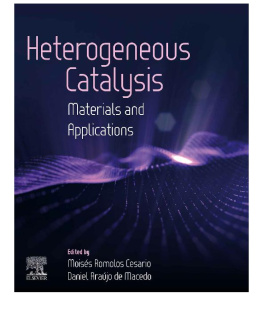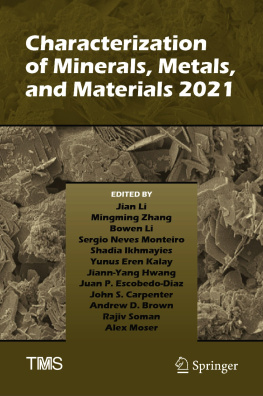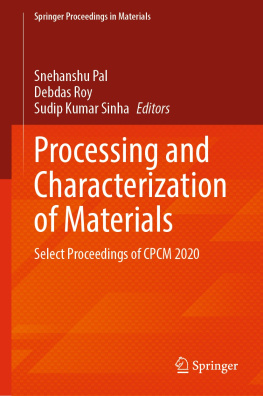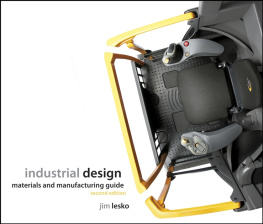Israel E. Wachs - Characterization of Catalytic Materials
Here you can read online Israel E. Wachs - Characterization of Catalytic Materials full text of the book (entire story) in english for free. Download pdf and epub, get meaning, cover and reviews about this ebook. year: 2010, publisher: Momentum Press, genre: Children. Description of the work, (preface) as well as reviews are available. Best literature library LitArk.com created for fans of good reading and offers a wide selection of genres:
Romance novel
Science fiction
Adventure
Detective
Science
History
Home and family
Prose
Art
Politics
Computer
Non-fiction
Religion
Business
Children
Humor
Choose a favorite category and find really read worthwhile books. Enjoy immersion in the world of imagination, feel the emotions of the characters or learn something new for yourself, make an fascinating discovery.

- Book:Characterization of Catalytic Materials
- Author:
- Publisher:Momentum Press
- Genre:
- Year:2010
- Rating:4 / 5
- Favourites:Add to favourites
- Your mark:
- 80
- 1
- 2
- 3
- 4
- 5
Characterization of Catalytic Materials: summary, description and annotation
We offer to read an annotation, description, summary or preface (depends on what the author of the book "Characterization of Catalytic Materials" wrote himself). If you haven't found the necessary information about the book — write in the comments, we will try to find it.
Characterization of Catalytic Materials — read online for free the complete book (whole text) full work
Below is the text of the book, divided by pages. System saving the place of the last page read, allows you to conveniently read the book "Characterization of Catalytic Materials" online for free, without having to search again every time where you left off. Put a bookmark, and you can go to the page where you finished reading at any time.
Font size:
Interval:
Bookmark:
MATERIALS CHARACTERIZATION SERIES
Surfaces, Interfaces, Thin Films
Series Editors: C. Richard Brundle and Charles A. Evans, Jr.
Series Titles
Encyclopedia of Materials Characterization, C. Richard Brundle, Charles A. Evans, Jr., and Shaun Wilson
Characterization of Metals and Alloys, Paul H. Holloway and P. N. Vaidyanathan
Characterization of Ceramics, Ronald E. Loehman
Characterization of Polymers, Ho-Ming Tong, Steven P. Kowalczyk, Ravi Saraf, and Ned J. Chou
Characterization in Silicon Processing, Yale Strausser
Characterization in Compound Semiconductor Processing, Yale Strausser
Characterization of Integrated Circuit Packaging Materials, Thomas M. Moore and Robert G. McKenna
Characterization of Catalytic Materials, Israel E. Wachs
Characterization of Composite Materials, Hatsuo Ishida
Characterization of Optical Materials, Gregory J. Exarhos
Characterization of Tribological Materials, William A. Glaeser
Characterization of Organic Thin Films, Abraham Ulman
Characterization of Catalytic Materials
Copyright Momentum Press, LLC, 2010
All rights reserved. No part of this publication may be reproduced, stored in a retrieval system, or transmitted in any form or by any meanselectronic, mechanical, photocopy, recording or any other except for brief quotations, not to exceed 400 words, without the prior permission of the publisher
First published by Butterworth-Heinemann in 1993
Copyright 1992, by Butterworth-Heinemann, a division of Reed-Elsevier, Inc.
Reissued volume published in 2010 by
Momentum Press, LLC
222 East 46th Street, New York, N.Y. 10017
www.momentumpress.net
ISBN-13: 978-1-60650-184-9 (hard back, case bound)
ISBN-10: 1-60650-184-4 (hard back, case bound)
ISBN-13: 978-1-60650-186-3 (e-book)
ISBN-10: 1-60650-186-0 (e-book)
DOI forthcoming
Interior Design by Scribe, Inc.
10 9 8 7 6 5 4 3 2 1
Printed in Taiwan ROC
The 11 volumes in the Materials Characterization Series were originally published between 1993 and 1996. They were intended to be complemented by the Encyclopedia of Materials Characterization, which provided a description of the analytical techniques most widely referred to in the individual volumes of the series. The individual materials characterization volumes are no longer in print, so we are reissuing them under this new imprint.
The idea of approaching materials characterization from the material user's perspective rather than the analytical expert's perspective still has great value, and though there have been advances in the materials discussed in each volume, the basic issues involved in their characterization have remained largely the same. The intent with this reissue is, first, to make the original information available once more, and then to gradually update each volume, releasing the changes as they occur by on-line subscription.
C. R. Brundle and C. A. Evans, October 2009
This Materials Characterization Series attempts to address the needs of the practical materials user, with an emphasis on the newer areas of surface, interface, and thin film microcharacterization. The Series is composed of the leading volume, Encyclopedia of Materials Characterization, and a set of about 10 subsequent volumes concentrating on characterization of individual materials classes.
In the Encyclopedia, 50 brief articles (each 10 to 18 pages in length) are presented in a standard format designed for ease of reader access, with straightforward technique descriptions and examples of their practical use. In addition to the articles, there are one-page summaries for every technique, introductory summaries to groupings of related techniques, a complete glossary of acronyms, and a tabular comparison of the major features of all 50 techniques.
The 10 volumes in the Series on characterization of particular materials classes include volumes on silicon processing, metals and alloys, catalytic materials, integrated circuit packaging, etc. Characterization is approached from the materials user's point of view. Thus, in general, the format is based on properties, processing steps, materials classification, etc., rather than on a technique. The emphasis of all volumes is on surfaces, interfaces, and thin films, but the emphasis varies depending on the relative importance of these areas for the materials class concerned. Appendixes in each volume reproduce the relevant one-page summaries from the Encyclopedia and provide longer summaries for any techniques referred to that are not covered in the Encyclopedia.
The concept for the Series came from discussion with Marjan Bace of Manning Publications Company. A gap exists between the way materials characterization is often presented and the needs of a large segment of the audiencethe materials user, process engineer, manager, or student. In our experience, when, at the end of talks or courses on analytical techniques, a question is asked on how a particular material (or processing) characterization problem can be addressed the answer often is that the speaker is an expert on the technique, not the materials aspects, and does not have experience with that particular situation. This Series is an attempt to bridge this gap by approaching characterization problems from the side of the materials user rather than from that of the analytical techniques expert.
We would like to thank Marjan Bace for putting forward the original concept, Shaun Wilson of Charles Evans and Associates and Yale Strausser of Surface Science Laboratories for help in further defining the Series, and the Editors of all the individual volumes for their efforts to produce practical, materials user based volumes.
C. R. Brundle C. A. Evans, Jr.
This comprehensive volume on catalytic materials, catalytic properties, and the techniques needed to characterize both materials and properties over the wide range involved, was put together by 11 individual experts, split between academia, oil company research and engineering laboratories, and a national laboratory. Though, of course, there have been technological advances in the areas covered since the original publication, the methodology discussed for characterization and evaluation of catalysts remains as valid today as it was then. After reissuing the volume in close to its original form, it is our intent to release updates to individual chapters, plus new material, as on-line downloads, as they become available.
C. R. Brundle and C. A. Evans, Jr., January 2010
Heterogeneous catalysis has undergone a revolutionary change in the past two decades due to the development of sophisticated characterization methods that provide fundamental information about the catalyst bulk structures, surfaces, and their properties. For the first time, these characterization methods have allowed researchers to see the surfaces of catalytic materials, their bulk structures (crystalline as well as amorphous phases), the influence of the process conditions on the catalytic material, as well as the effect of different synthesis methods. This new information has tremendously advanced our understanding of catalytic materials and their properties. These characterization methods have become our eyes and are indispensible in the development of new catalytic materials. It is hard to conceive of a modern heterogeneous catalysis activity, be it research or manufacturing, without the aid of these new characterization techniques.
Next pageFont size:
Interval:
Bookmark:
Similar books «Characterization of Catalytic Materials»
Look at similar books to Characterization of Catalytic Materials. We have selected literature similar in name and meaning in the hope of providing readers with more options to find new, interesting, not yet read works.
Discussion, reviews of the book Characterization of Catalytic Materials and just readers' own opinions. Leave your comments, write what you think about the work, its meaning or the main characters. Specify what exactly you liked and what you didn't like, and why you think so.






